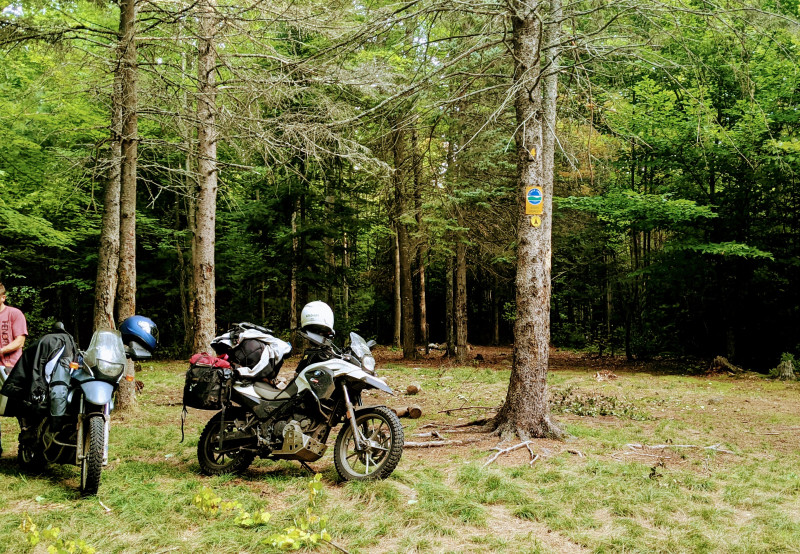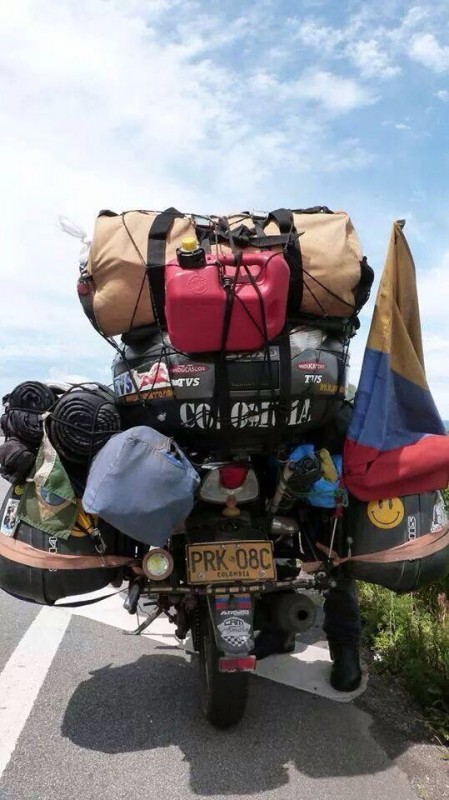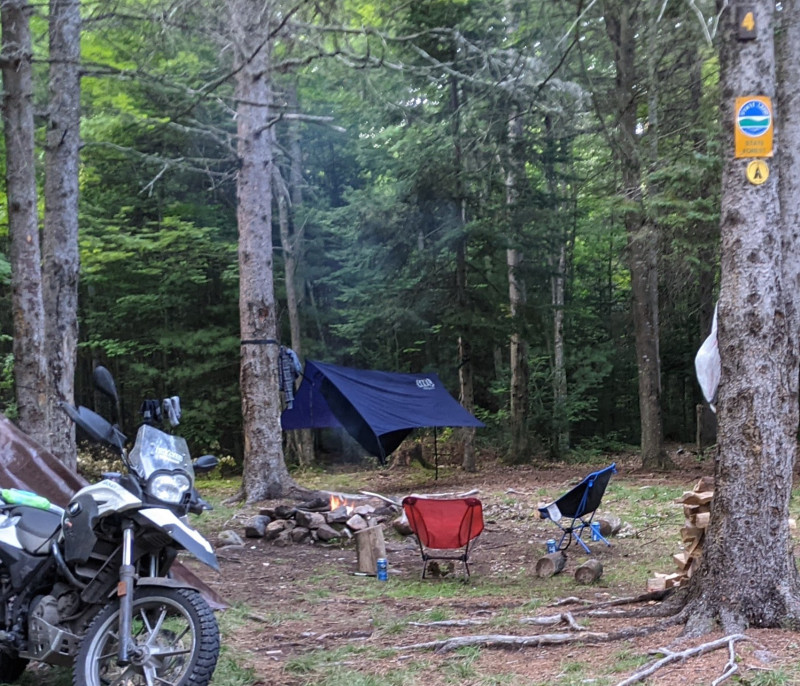It’s almost December and 15°… so let’s talk camping!! Specifically, moto camping.
What better way to connect with nature and embrace our need for primal freedom and wanderlust than to set off on two wheels, surviving only on the essentials we can carry, craft or collect.
This article is not about how to survive on nothing but a pocket knife…but hopefully useful resources for those looking to try it on two wheels for the first time.
Been Camping Before?
Great, I’ll share my advice on navigating the places and policies of the Adirondacks, and how to apply your camping experience to 2 wheels, and what might be different.
First Time Camping?
Great, I’ve included some practical tips for beginners, but before you read any further, please head this;
you should not start with moto camping.
This is just pragmatic. Besides being much better off when you discover your new tent leaks, it’s also good to get comfortable with the basics without the added stress of “can I bring everything I might need.”
Safety First
Gotta say it, be smart, be safe. Make sure someone knows your plans, and when you’ll check in next. If you’re planning to be anywhere remote, or solo, consider something like Spot 3 or InReach – GPS trackers to share your location and send texts via Satellite in case phones aren’t an option.
If you’re going extended distances into remote areas, there is many more considerations outside this article. I’m not covering wilderness survival and navigation by starlight – and you’re not here for that anyway. We’re covering the basic camping essentials to have nice multi-day tour around the Adirondack Park.
Choosing a Location
One of the great things about camping is the Adirondacks is that you can find far-away hidden gems high on mountains and open lakes, but you can also find conventional campgrounds with easy access and plumbing.
Campgrounds
There are both private and public campgrounds to choose from, but personally I think the NYS Parks does a great job making access to pubci parks easy, and they range from tent-only to RV pads with electric hookups, so there’s a spot for every level of adventure. You can more about camping on public parks here, https://parks.ny.gov/camping/
- Walk sites for less than $20, or reserve in advance for a little more.
- Site limits (6 ppl, 2 tents, 2 vehicles)
- Quiet hours (usually 10pm-7am)
‘Primitive Camping’ on state land
Even though much of the Adirondack park is private or protected land, there are huge swaths of land under DEC control open to tent camping. So if you’d rather throw up a tent far from civilization and plumbing, there’s plenty to choose from. Just make sure you follow DEC rules for camping within the Adirondack Park and note where you can and can’t have fires.
DEC lands and primitive camp

Beyond that you’ll also need some additional forethought as these remote sites mean getting back to a store or other amenities could be a challenge.
Packing Your supplies

Hmm, where do we put the campstove…
Even if you could load on this much, the weight and bulk will severely limit your abilities and options. So when packing up for the trip, I have 3 tips:
- consider your destination. If you’re not more than a few miles from town, consider just grabbing food on your way in and coffee on your way out. Eliminating the need to prep food drastically reduces load.
- Use someone else’s list. Seriously you can find die-hards that have tuned their packing lists over hundreds of trips. Why reinvent the wheel. There are exhaustive lists and general guidance, but I always favor first aid and too much warm clothes over kit and gear.
2a. Bear bag if you’re carrying food. https://www.adirondack.net/wildlife/black-bears/
- My favorite forgotten - these are just obvious things I’ve been stuck without.
3a. bug spray. Jeesum-crow I’ll tell ya.. the black flies are brutal around here, mosquitos too. Especially if you’re like me they can smell you a mile off and swarm hard. All the fancy tents and amenities are meaningless when you’re being tormented by unrelenting carnivores.
3b. Garbage bags. Not that you generate loads of trash, but I guarantee you’ll make or find something you don’t want touching everything else packed neatly into your saddlebags. Beyond carrying trash, they’re useful for dry feet, ponchos, emergency still, etc, etc..you know. I keep a roll of kitchen bags at the bottom of my saddlebag now.
Settling in
This is where I’ll share some of my personal creature comforts. Always set up your tent first, duh. But what’s next?
- Fat wood fire starters. These come in all brands, it’s just wood, really sappy kiln dried wood that lights fast had burns hard. Toss 3-4 per fire, they barely take any space.
- Camping pad. So many choices, but any of them (even this thirty-something compact dilly) 1000% better than cold, hard, probably rooted or rocky ground.
- Camping Hammock. Lighter and smaller than most tents, you can skip the need for a sleeping pad as well. THey’re ideal for us in the northeast, we’ve always got a few trees nearby.

Closing up and cleaning up
Like I shared above, the DEC does a fantastic job up here keeping these beautiful places open, and it’s our duty to play by the rules that let that happen. That means leaving no trace of our camp except perhaps some coals if fires were allowed. Let’s keep it beautiful (and open!) for everyone by doing our part.